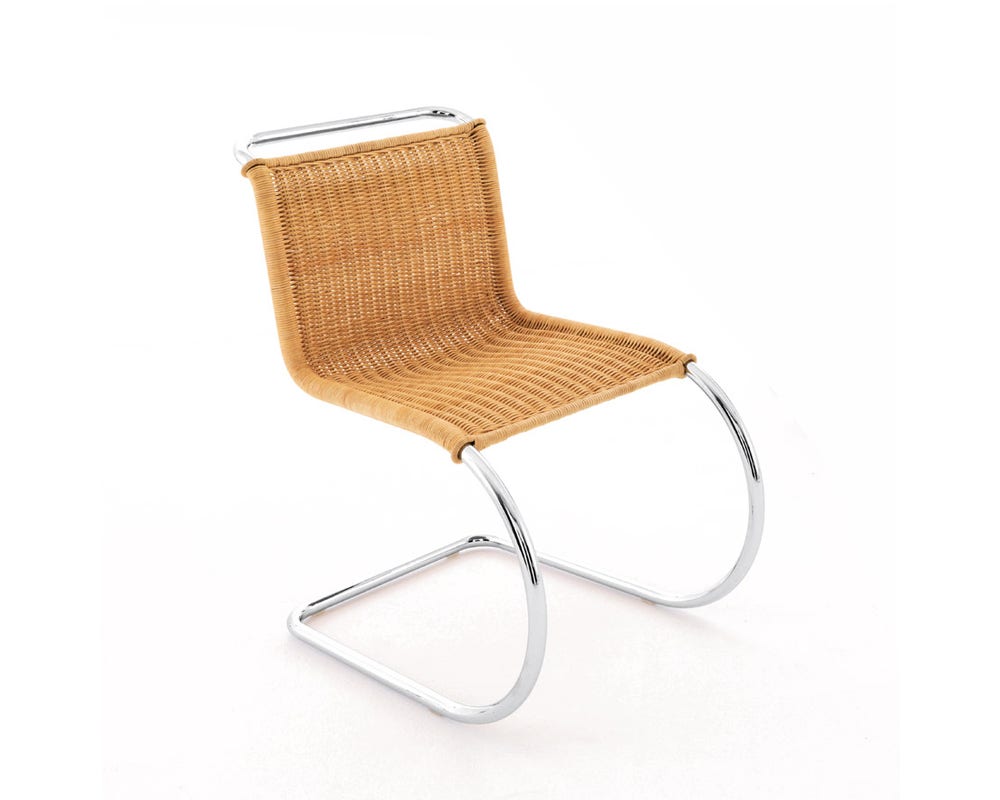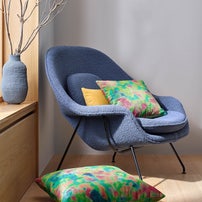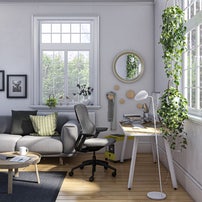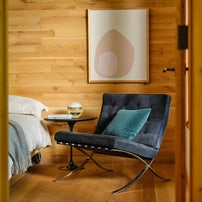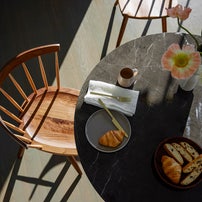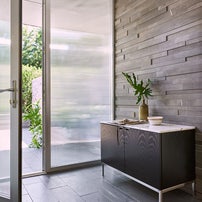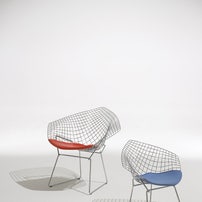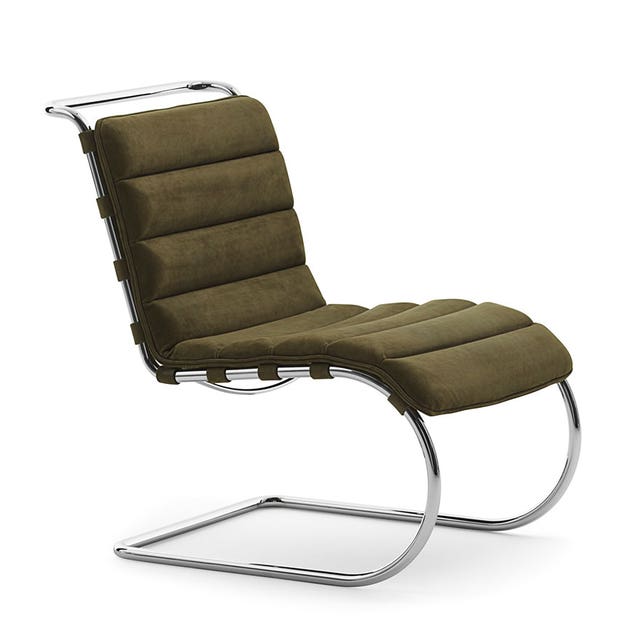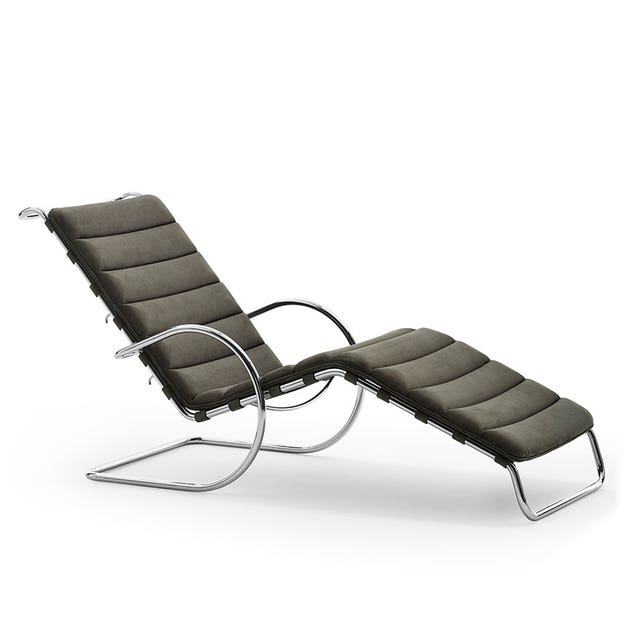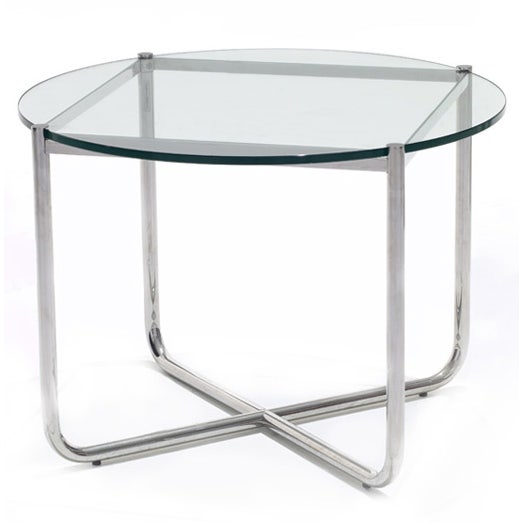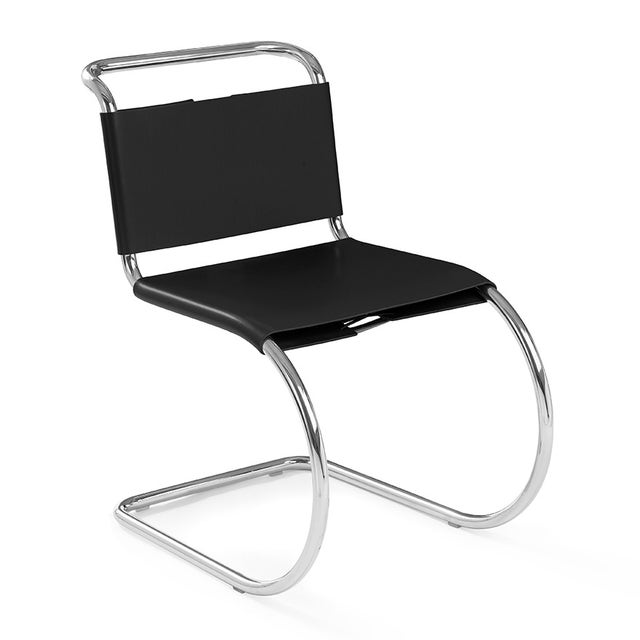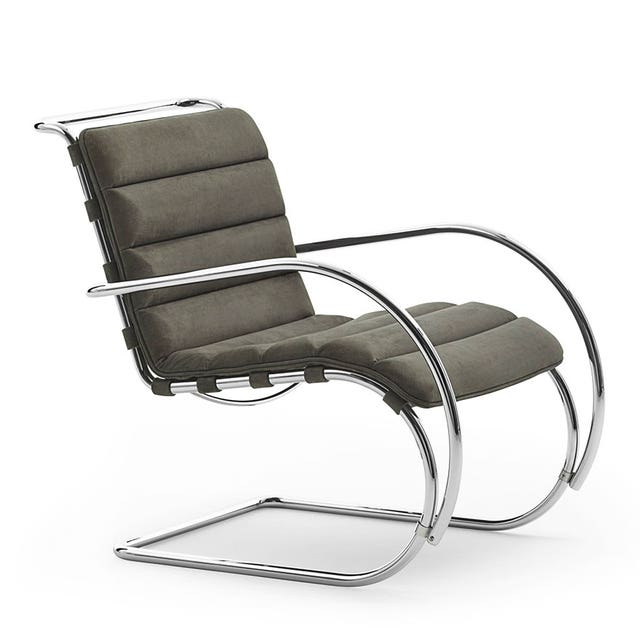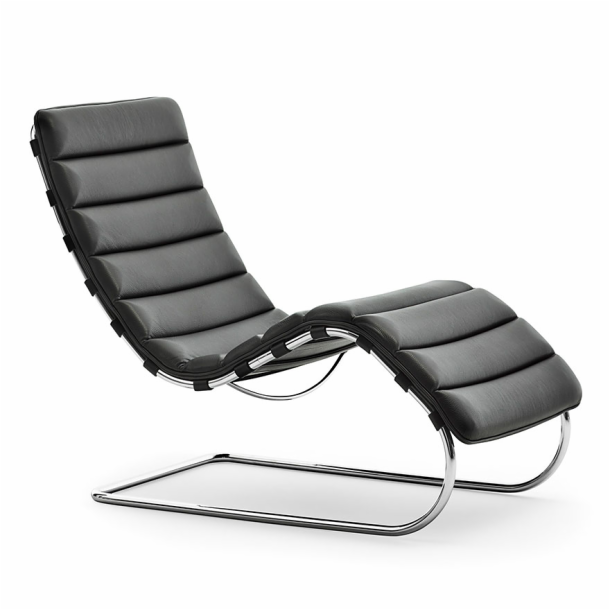Knoll Ludwig Mies Van Der Rohe - MR Side Chair
The origins of the bent-steel cantilevered chair are somewhat murky, but generally three names come up in the discussion. Marcel Breuer is widely credited with pioneering the exploration of the material, Mart Stam seems to be the first to conceive a “chair without back legs”, and Mies van der Rohe is remembered as the one who made it beautiful.
It is believed that Mart Stam described his idea—a continuous loop of steel (he used a thinner gauge gas pipe in the earliest versions) with a cantilevered seat—at a meeting of the Werkbund in 1926. In attendance were Marcel Breuer and Mies van der Rohe, both of whom were inspired to design cantilever chairs of their own in the coming months. Mies replaced the right angles on the front legs with a graceful curve which had the advantage of increasing elasticity while preventing material fatigue. Mies first showed the MR 10 and MR20 at the Stuttgart Weissenhof Estate — a seminal Werkbund exhibition, which first brought modernist works to the public, with buildings designed by Peter Behrens, Walter Gropius, Le Corbusier, Mies van der Rohe and others.
Over the next five years, Mies would develop an entire series of tubular steel designs now presented by Knoll as the MR Collection.
The MR Collection represents some of the earliest steel furniture designs by Mies van der Rohe. The material choice was inspired by fellow Bauhaus master Marcel Breuer, while the forms are thought to be modern derivatives of 19th century iron rocking chairs.
Reintroduced in 2018, the MR Chair with a rattan seat expands the Knoll MR Collection.
MEASUREMENTS:
- Height: 78.7 cm / 31 inch
- Width (No Arms): 48.7 cm / 19.25 inch
- Width (Arms): 53.3 cm / 21 inch
- Depth (No Arms): 69 cm / 27.25 inch
- Depth (Arms): 81.7 cm / 32.5 inch
- Seat Height: 45.7 cm / 18 inch
MATERIALS:
- Chrome frame
- Woven Rattan: Natural cane handwoven onto polished chrome frame and protected by a clear lacquer finish (use water and glycerin every three months to keep cane from drying out)
- Four molded clear plastic glides with twin-pin snap-in construction included
HELPFUL NOTES:
- The KnollStudio logo and signature of Ludwig Mies van der Rohe are stamped on each piece
- Greenguard Indoor Air Quality Certified®

Ludwig Mies van der Rohe
Germany, 1886 - 1969
Mies van der Rohe began his career in architecture in Berlin, working as an architect first in the studio of Bruno Paul and then, like Le Corbusier and Walter Gropius, for Peter Behrens. In 1928, Mies and his companion and colleague, the designer and Bauhaus alumna Lilly Reich, were asked to design the German Pavilion for the 1929 International Exposition in Barcelona. The purpose of the Pavilion was to provide a location that could be visited by the king and queen of Spain during the opening of the Exposition. With that in mind, Mies designed a modern throne – known today as the Barcelona Chair – for their majesties. In the following year, Mies designed another notable chair, the Brno, with a gravity-defying cantilevered base.
In 1930, Mies succeeded Walter Gropius as the director of the Bauhaus, where he stayed until the school closed in 1933. In 1937, Mies emigrated to the United States, and a year later became the director of architecture at the Illinois Institute of Technology. The rest of his career was devoted to promoting the modernist style of architecture in the U.S., resulting in rigorously modern buildings such as the Farnsworth House and the Seagram Building, designed with Philip Johnson.
The modern city, with its towers of glass and steel, can be at least in part attributed to the influence of architect Ludwig Mies van der Rohe. Equally significant, if smaller in scale, is Mies’ daring furniture designs, pieces that exhibit an unerring sense of proportion, as well as minimalist forms and exquisitely refined details.

Knoll has lived their guiding principle, "good design is good business," since 1938. Products are all created to inspire, fit, and last. The Bauhaus philosophy that furniture should complement, not compete with architecture, is central to Knoll’s design. Its extensive portfolio includes office work systems, residential mid-century modern classics, textiles, and accessories.
Designers like Harry Bertoia, Eero Saarinen, Warren Platner, Isamu Noguchi, and Florence Knoll contributed to Knoll’s iconic designs. Knoll invests in research and field studies and explores organizational behavior and technology to ensure quality excellence. As a leader in sustainability, Knoll’s practices reduce waste and conserve resources. Based in Pennsylvania, Knoll has a strong international presence, and 40 products are in the permanent collection of the Museum of Modern Art in New York.
Knoll products incur a 7.5% shipping charge at checkout, with a minimum of $85 and maximum of $500. This fee reflects White Glove Delivery for large items, which includes bringing the item to your room of choice, unpacking, removal of packaging, and assembly.
For further information on our shipping policies click here.
For further information on returns + refunds click here.

